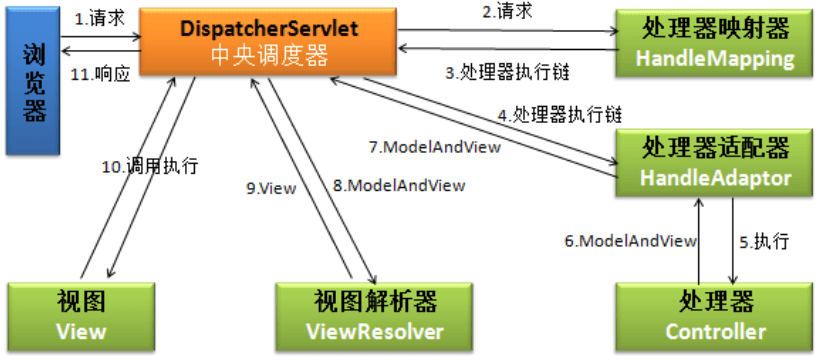Spring boot集成Go-FastDFS實現圖片上傳刪除等功能
摘要:/** * 圖片上傳 * * @param file * @param sixCode * @return * @throws IOException */ public UploadResult upload(MultipartFile file, String sixCode) throws IOException { UploadResult uploadResult = new UploadResult()。private String path。
<div>
工作中接觸到需要採集並管理大量圖片的需求,本來是用的FastDFS,但是發現實際情況是在項目實施時難以找到linux服務器去安裝FastDFS,所以經過調研,選擇了可以在windows服務器上安裝部署的Go-FastDFS文件服務器
二.Go-FastDFS簡介
go-fastdfs是一個基於http協議的分佈式文件系統,它基於大道至簡的設計理念,一切從簡設計,使得它的運維及擴展變得更加簡單,它具有高性能、高可靠、無中心、免維護等優點。
三.安裝Go-FastDFS文件服務器
1)下載地址: https://github.com/sjqzhang/go-fastdfs/releases
2)下載完成直接啓動fileserver.exe

3)驗證是否安裝成功,訪問localhost:8080

4)驗證上傳功能,點擊選擇文件選擇好文件後,點擊上傳

5)在返回的url後加?download=0,查看圖片

四.實例實現功能 1)圖片上傳 2)圖片刪除 3)圖片訪問 4)圖片水印添加 五.創建Spring boot項目,寫代碼實現功能 1)pom.xml添加依賴
<!--工具包-->
<dependency>
<groupId>cn.hutool</groupId>
<artifactId>hutool-all</artifactId>
<version>${hutool.version}</version>
</dependency>
2)核心代碼,使用go-fastdhs上傳圖片並添加水印及刪除圖片工具類
@Component
public class GoFastdfsClientUtil {
@Value("${camera.upload.path}")
private String uploadPath;
@Value("${camera.delete.path}")
private String deletePath;
private final Logger logger = LoggerFactory.getLogger(GoFastdfsClientUtil.class);
/**
* 圖片上傳
*
* @param file
* @param sixCode
* @return
* @throws IOException
*/
public UploadResult upload(MultipartFile file, String sixCode) throws IOException {
UploadResult uploadResult = new UploadResult();
ByteArrayOutputStream bos = addWatermark(file, sixCode);
byte[] b = bos.toByteArray();
ByteArrayInputStream byteArrayInputStream = new ByteArrayInputStream(b);
InputStreamResource isr = new InputStreamResource(byteArrayInputStream, file.getOriginalFilename());
Map<String, Object> params = new HashMap<>();
params.put("file", isr);
params.put("path", "image");
params.put("output", "json");
// 場景
params.put("scene", "image");
String resp = HttpUtil.post(uploadPath, params);
Console.log("resp: {}", resp);
JSONObject exJson = JSONObject.parseObject(resp);
uploadResult = JSON.toJavaObject(exJson, UploadResult.class);
return uploadResult;
}
/**
* 圖片刪除
*
* @param fileUrl
*/
public void deleteImage(String md5) {
if (StringUtils.isEmpty(md5)) {
return;
}
try {
Map<String, Object> params = new HashMap<>();
params.put("md5", md5);
HttpUtil.post(deletePath, params);
} catch (Exception e) {
logger.warn(e.getMessage());
}
}
/**
* 加水印
*
* @param myfile
* @param sixCode
* @return
* @throws IOException
*/
private ByteArrayOutputStream addWatermark(MultipartFile myfile, String sixCode) throws IOException {
InputStream in = myfile.getInputStream();
BufferedInputStream bis = new BufferedInputStream(in);
BufferedImage image = ImageIO.read(bis);
int height = image.getHeight();
int width = image.getWidth();
// 加水印
Graphics2D g = image.createGraphics();
g.drawImage(image, 0, 0, width, height, null);
g.setColor(new Color(128, 128, 128));
// 字體
int num = 0;
if (width > height) {
num = height / 30;
} else {
num = width / 30;
}
g.setFont(new Font("微軟雅黑", Font.PLAIN, num));
SimpleDateFormat formatter = new SimpleDateFormat("yyyy-MM-dd HH:mm:ss");
String date = formatter.format(new Date());
String watermarkContent = "拍攝時間:" + date + "&攝像頭編碼:" + sixCode;
// 設置水印座標
String[] split = watermarkContent.split("&");
int x = 10;
int y = height - 10;
for (int i = 0; i < split.length; i++) {
g.drawString(split[i], x, y -= g.getFontMetrics().getHeight());
}
g.dispose();
ByteArrayOutputStream bos = new ByteArrayOutputStream();
ImageIO.write(image, "jpg", bos);
return bos;
}
}
解釋:這裏我們事先在配置文件中配置好了文件的上傳路徑以及刪除路徑,配置如下:
camera:
upload:
path: http://localhost:8080/group1/upload
delete:
path: http://localhost:8080/group1/delete
visit:
path: http://localhost:8080
3)上面的方法中我們將圖片上傳後的返回值轉換爲結果集對象,對象定義如下:
public class UploadResult implements Serializable{
/** * */ private static final long serialVersionUID = 5534287808864118463L; private String url; private String md5; private String path; private String domain; private String scene; private BigInteger size; private BigInteger mtime; private String scenes; private String retmsg; private int retcode; private String src; ......get,set方法.....} 4)在實際應用中編寫控制層方法調用核心工具類的上傳,刪除方法即可 總結:本次總結主要描述了spring boot集成go-fastdfs上傳圖片的核心方法,沒有具體的測試展示,其實go-fastdfs的使用很簡單,接口編寫也很簡單













